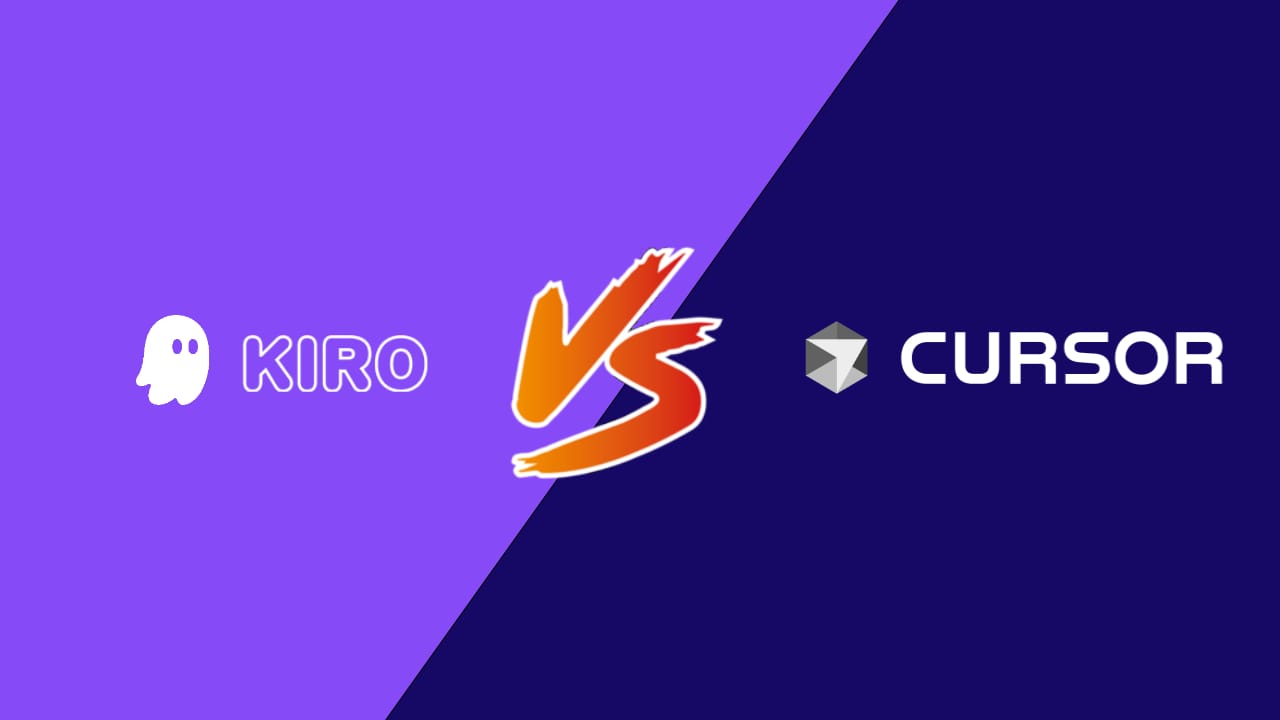Kiro vs Cursor: The AI IDE Battle Developers Can’t Ignore

Amazon’s move into AI development tools with Kiro is sending waves across the dev landscape. But another player has quietly captured the attention of early adopters: Cursor. If you're a developer, CTO, or tech lead evaluating the next generation of IDE assistants, this comparison is essential.
Updated: October 22, 2025
Kiro vs Cursor At a Glance
| Criterion | Kiro (Amazon) | Cursor | Why it matters |
|---|---|---|---|
| IDE focus | Cloud-centric; enterprise-grade integrations | Local IDE experience with fast AI pair-assist | Match to your development workflow |
| Repository privacy | Strong enterprise posture | Strong local-first posture | Protects IP and private code |
| Policies / guardrails | Team & org-level controls available | Repo/workspace-level rules available | Governance at team scale |
| Context handling | Larger, managed contexts for long tasks | Fast, local context for rapid iteration | Long builds vs. quick edits |
| Extensions / tool use | Deep hooks in the AWS ecosystem | Rich editor workflows & tool hooks | Developer productivity |
| Team management | SSO/SCIM; org policies; centralized controls | Seats/teams; workspace policies | Scaling to multiple developers |
| Pricing model (high-level) | Seat + usage (see enterprise terms) | Seat + usage (see plan details) | Total cost of ownership |
| Best for | Regulated teams; AWS-heavy environments | Indie/SMB teams iterating locally and quickly | Fit by team and constraints |
Discover smart AI tools to streamline your next automation
When to choose Kiro
- You run on AWS and want centralized policies/integrations.
- Enterprise features (SSO/SCIM, org policies) matter to you.
- Longer workflows and large contexts are common.
When to choose Cursor
- Your team works primarily in a local IDE and values speed.
- You want editor-first workflows and quick pair-assist.
- You don’t need heavy enterprise layers right now.
What developers actually do faster
- Refactor + generate tests on an existing module.
- Spin up a new component with skeleton, lint, and basic tests.
- Update docs from a commit diff with minimal friction.
Not sure which fits your stack? Get a 15-min IDE Fit Review — we map your repo, workflow, and constraints and give a clear recommendation.
Why This Matters
AI IDEs are evolving from code completion helpers to context-aware coding agents. Choosing the right tool can directly impact your team’s velocity, code quality, and onboarding time.
What Is Amazon Kiro?
Amazon Kiro is Amazon’s enterprise-grade AI agent for developers. It’s designed to plug directly into your IDE and give contextual, company-specific support — including:
- Recognizing internal APIs
- Respecting company code conventions
- Drawing from documentation and historical decisions
Think of it as an AI assistant that knows your company inside out, rather than a generic code suggester.
What Is Cursor?
Cursor is a rising star among AI-powered IDEs. Built as a standalone IDE (based on VS Code), Cursor deeply integrates AI chat features and inline suggestions. Cursor shines with:
- Chat-based debugging
- Contextual explanations
- Suggesting fixes based on previous errors
While not as enterprise-native as Kiro, Cursor is incredibly popular for solo devs, startups, and AI-first coders who want speed and interactivity.
Kiro vs Cursor: Key Differences
| Feature | Amazon Kiro | Cursor |
|---|---|---|
| Focus | Enterprise-grade AI agent IDE | AI-first lightweight IDE |
| IDE Integration | Works with your existing IDE (JetBrains, VS Code, etc.) | Cursor’s own IDE (based on VS Code) |
| Context Awareness | Deep company-specific knowledge | Limited to current files unless trained |
| Use Case | Mid to large enterprises with complex systems | Startups, indie devs, quick prototyping |
| Pricing Model | Likely tied to AWS enterprise plans | Subscription-based |
| Internal System Access | Integrates with internal repos, APIs, CI/CD pipelines | No native support for internal corp systems |
| Developer Onboarding | Streamlines onboarding with internal policy knowledge | Less onboarding-specific tooling |
Choose Kiro If
- You operate in a regulated, complex environment.
- You want AI suggestions based on internal policies and architecture.
- Your team uses AWS and wants tighter integration with internal systems.
Explore how Kiro transforms enterprise development →
Choose Cursor If
- You’re a fast-moving team building prototypes or MVPs.
- You want inline suggestions, quick debugging, and conversational coding.
- You don’t require deep enterprise integrations.
What About GitHub Copilot?
Kiro and Cursor are often compared against GitHub Copilot, but Copilot lags behind in contextual awareness and organizational adaptability. If you're serious about AI-native development workflows, Kiro and Cursor go far beyond autocomplete.
Final Verdict
Kiro is like hiring a senior developer who already knows your architecture.
Cursor is like onboarding an AI pair programmer for quick turnarounds.
Your choice depends on team size, project complexity, and infrastructure. And if you're looking to integrate AI deeper into your software stack, check out:
Want Help Choosing the Right AI Stack?
Scalevise helps companies implement the right AI agents, from IDE integrations to full-stack automations.
→ Run our AI Scan and discover missed opportunities in your tech workflows.
